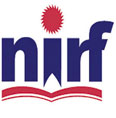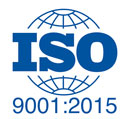
RAJA PEARY MOHAN COLLEGE
Uttarpara, Hooghly, West Bengal
A heritage college established in 1887; Affiliated to University of Calcutta NAAC accredited with B grade (2.7); ISO 9001:2015



A heritage college established in 1887; Affiliated to University of Calcutta NAAC accredited with B grade (2.7); ISO 9001:2015


Raja Peary Mohan College was founded on 20th June 1887 by an eminent philanthropist, promoter of education and social reformer in nineteenth-century Bengal Raja Joykrishna Mukherjee, who was also a benevolent zamindar of Uttarpara in the Hooghly District of West Bengal. As a supporter of Iswarchandra Vidyasagar's social reforms, he is still remembered as the first signatory to the historic petition sent to Lord Dalhousie, praying for the legalization of Hindu widow marriage in 1856. He made an extensive attempt to spread education, particularly in the rural areas. By 1858 he was able to establish as many as 31 schools in the districts of Howrah, Hooghly and Burdwan. He applied for establishing a Girl's School at Uttarpara in 1849 which was turned down by the East India Company's Government. Failing to establish a Girl's School, he donated Rs. 10,000/- to Bethune School, Calcutta, for the cause of female education. The historic Uttarpara Public Library bears testimony to his desire for the spread of education. This was the first free Non-Government Public circulating Library in India. Joykrishna was also instrumental in the establishment of the Uttarpara Government High School and finally, at an advanced age, he fulfilled his cherished dream of establishing Uttarpara College. After the transfer of administration from the Company to the Crown in 1858, the colonial Government gave the necessary permission to establish the college. Raja Peary Mohan Mukherjee: He is the patron-benefactor of the college who nurtured the institution during its time of inception. In 1889 the newly founded college was amalgamated with the Uttarpara Government School and came under the management of the government. Eight years later the Government retained only the school's management and the college came under the benevolent patronage of Raja Peary Mohan Mukherjee, worthy son and successor of the late Joykrishna Mukherjee. Raja Peary Mohan Mukherjee was certainly a chip off the old block and a remarkable personality of his age. Besides Uttarpara College, he was also closely associated with Bangabasi and Surendranath Colleges of Calcutta and one of the founders of the Carmichael (R.G. Kar) Medical College. He presided over a mammoth gathering at the then Town Hall, Calcutta to give a public reception to the Swami Vivekananda.
The college is situated in a place which is very near to the famous Grand Trunk Road and just on the opposite bank of the Hooghly river of the famous temple of Goddess Kali at Dakshineswar. With thirty-one students, Raja Joykrishna Mukherjee established this educational institution with
the vision and mission to achieve excellence in higher education. He wanted to empower students with relevant knowledge, competence and creativity, spread female education and practice inclusive growth for socio-economic change and sustainable development for society. It is noteworthy that Probal Chandra Mukherjee, himself a member of the founder's family was the first student of the college. Unfortunately, Joykrishna Mukherjee breathed his last in 1888, only one year after the foundation of the College.
In 1887, when the college was founded, Shyama Charan Ganguly, the headmaster of the Govt. School temporarily became the Principal. The first Principal, Kaliprasanna Ganguly joined in 1897. At the time of its establishment, the college was known as Uttarpara College. In 1889, the newly established college was amalgamated with Uttarpara Government School and came under the management of the Bengal Government. Eight years later, the Government retained only the management of the school while the college came under the benevolent patronage of Raja Peary Mohan Mukherjee, worthy son and successor of Babu Joykrishna Mukherjee. Then the college came under the benevolent patronage, Raja Peary Mohan Mukherjee, worthy son and successor of the late Joykrishna Mukherjee. Throughout his life, Raja Peary Mohan spent a huge sum of money on the college and it was in the fitness of things that the college was renamed after his memory in a function held on the 4th of October 1953.
After the demise of Raja Peary Mohan Mukherjee, the College did not lead to an altogether cul de sac due to the tireless efforts of his son, Kumar Bhupendra Nath Mukherjee, who inherited the Renaissance idealism and reformative zeal of his grandfather and his father. He, like his father, contributed substantial financial assistance for the maintenance and survival of the College. In 1932, a decision was taken by the Governing Body to close down the College. However, the teachers and the non-teaching staff decided to work voluntarily for the College and set an example of extreme self-dedication. Acharya Dhruba Kumar Pal, the then Principal gave dynamic leadership in this critical juncture. He joined the College as a lecturer and officiating Principal in 1924, finally became the permanent Principal in 1926 and remained in the post till 1950. Dhruba Kumar Pal and other teachers like Pasupati Ganguly, Pannalal Mukherjee, Ramchandra Bhattacharjee, Mahendranath Gupta etc. showed exemplary devotion during this
dark period of the college. Local citizens and ex-students came forward with donations. Representations were made to the Bengal Government. Finally, after many years of hardship, it was on 21 August 1938, a team including Fazlul Haque (the then Chief Minister), Nalini Ranjan Sarkar (the then Finance Minister) and the DPI visited the College and the College was approved a financial grant from the Directorate of Public Education in Bengal.After the demise of Acharya Dhruba Kumar Pal who piloted the College for 25 long years, Kiran Chandra Gupta became the Principal in 1950. He and his colleagues devoted all their energy to raise the status of the College. In a function held on 4th October 1953, the College was renamed Raja Peary Mohan College after its benefactor. It was during his time that the college reaffirmed its position as a foremost education institution. The College got affiliated with the University of Calcutta for B.A. in 1955, for B.Sc. in 1956 and for B.Com in 1958. In 1960, the affiliation of the College was transferred to the University of Burdwan. Later, after a number of protest meetings and demonstrations against this move, the College came back once again under the affiliation of the University of Calcutta in 1966. Till 1950, classes were limited to the then Intermediate standard. In 1955 the College got its affiliation for B.A. from the University of Calcutta, for B.Sc. in 1956 and B.Com. in 1958. Honours classes started in the college for the first time in 1959 in the Department of Bengali and Mathematics. Gradually Honours affiliation came in Philosophy (1961), Physics (1964), Zoology (1965), Political Science (1966), Economics (1966), Chemistry (1966), Commerce (1972), Physiology (1990), Botany (1996), English (1996) and History (2002). The Departments have a very good track record in examinations with University toppers in a number of subjects. Today the students come to this College not only from the rural areas of Hooghly and Howrah but also from the outskirts of Kolkata and other districts too. The College celebrated its Centenary with much pomp and grandeur in 1986. To commemorate this occasion, the then Honourable Chief Minister, Sri Jyoti Basu laid the foundation of a new building on 22nd June 1986 and the building was later named the Centenary building. An Auditorium comprising 320 seats and all modern amenities was inaugurated on 15 January 2002. In 2006 the college has been able to solve the acute space problem, to some extent, with grants from the ex-alumina of the college and ex-honourable Member of Parliament Sri Santoshsri Chatterjee from his M.P. Lad fund, which has endowed the college with a new look. The college celebrated its 125th year of establishment from 20th June 2011 to 20th June 2012. (1887-2012).
Now the college has successfully completed 130 years of journey. The College has gradually occupied a glorious position in the field of higher education in West Bengal. Good conduct and academic excellence are the watchwords of the College. It equips the students to face and overcome the challenges in the present globalized world and develops and moulds their minds for competing at the national level with the best spirit. Apart from successfully maintaining a healthy and disciplined academic atmosphere for purposeful education, it imbibes in the students’ core values like team spirit and social responsibility. The College administration, teaching and non-teaching staff and the students work in tandem to build up an ideal environment in the field of higher study which is, indeed, the real strength of this esteemed institution.